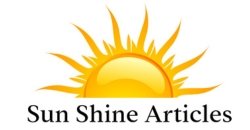The Europe roofing market size is poised for steady growth, driven by increasing construction activities, rising renovation projects, and advancements in roofing materials. Roofing solutions play a critical role in enhancing structural integrity, energy efficiency, and aesthetic appeal. The market is projected to grow at a CAGR of 3.78% between 2024 and 2032, fueled by trends like sustainability, green roofing, and innovative material technologies.
Market Overview
The European roofing market is a vital segment of the construction industry, catering to residential, commercial, and industrial applications. From protecting buildings against diverse weather conditions to improving energy efficiency, roofing is an essential element of modern infrastructure. The growing focus on sustainability, urbanization, and demand for durable and energy-efficient roofing solutions are shaping the market dynamics.
Market Size
The market has demonstrated consistent growth, driven by increased construction and renovation activities across Europe. Rising investments in sustainable building materials and green roofing technologies further bolster market expansion. By 2032, the roofing market is expected to achieve significant growth, underpinned by regulatory emphasis on energy efficiency and sustainable construction practices.
Market Share
By Material
- Bituminous Roofing
- Popular due to its affordability and weather resistance.
- Widely used in both residential and commercial applications.
- Tiles
- Highly preferred for their durability and aesthetic appeal.
- Dominate residential projects, especially in Southern Europe.
- Metal Roofing
- Known for its longevity, recyclability, and energy efficiency.
- Common in industrial and modern commercial buildings.
- Plastic Roofing
- Lightweight and cost-effective, primarily used in industrial and temporary structures.
- Others
- Includes wood and eco-friendly green roofing options, gaining popularity for sustainable construction.
By Type
- Flat Roofs
- Common in commercial and industrial buildings for ease of installation and maintenance.
- Slope Roofs
- Preferred in residential applications for superior water drainage and traditional aesthetics.
By End Use
- Residential
- High demand driven by new housing projects and renovation activities.
- Commercial
- Includes office buildings, retail outlets, and hospitality sectors.
- Focus on durable, energy-efficient solutions.
- Industrial
- Requires robust and low-maintenance roofing materials for factories and warehouses.
Market Trends
- Sustainability Focus
- Rising demand for eco-friendly materials like green roofs, solar roofing, and recyclable options.
- Adoption of energy-efficient roofing systems aligned with EU sustainability goals.
- Energy Efficiency
- Integration of solar panels and advanced thermal insulation in roofing designs.
- Renovation Boom
- Increased upgrades of older buildings with modern and durable roofing materials.
- Technological Advancements
- Development of lightweight materials, self-cleaning coatings, and modular roofing systems.
Market Analysis
Drivers
- Increased urbanization and housing development projects.
- Growing awareness of sustainable building practices.
- Advancements in roofing technologies, enhancing durability and efficiency.
Challenges
- High costs associated with premium roofing materials.
- Fluctuations in raw material prices affecting overall project costs.
- Stringent EU regulations on environmental sustainability and building codes.
Opportunities
- Rising adoption of solar-integrated roofing systems.
- Expansion in Eastern Europe, where urbanization is on the rise.
- Innovations in waterproofing and weather-resistant roofing technologies.
Market Segmentation
- By Material: Bituminous, Tiles, Metal, Plastic, Others.
- By Type: Flat Roof, Slope Roof.
- By End Use: Residential, Commercial, Industrial.
Market Growth
The European roofing market’s 3.78% CAGR highlights its steady expansion, supported by urbanization and increasing awareness of energy-efficient and sustainable solutions. Residential and commercial segments drive the market, while technological advancements and green roofing projects offer significant growth potential.
Recent Developments and Challenges in the Market
Recent Developments
- Sustainability Initiatives: Companies are introducing green roofing solutions to align with eco-conscious consumer preferences.
- Material Innovations: Lightweight metals, recycled plastics, and advanced bituminous solutions are gaining traction.
- Integration of Solar Panels: Solar roofing systems are becoming mainstream in commercial and residential sectors.
Challenges
- Regulatory compliance with stringent EU standards for building sustainability.
- Economic instability impacting large-scale construction projects.
- Competitive pressure from alternative construction materials.
Key Players in the Market
- BMI Group
- A leading provider of sustainable and energy-efficient roofing solutions.
- Etex Group
- Known for its innovative lightweight roofing materials.
- Sika AG
- Specializes in waterproofing and advanced roofing solutions.
- Tata Steel Europe
- Offers durable and recyclable metal roofing systems.
- Kingspan Group
- Renowned for its energy-efficient and modular roofing solutions.
These players emphasize innovation, sustainability, and strategic partnerships to maintain their competitive edge.
Upcoming Challenges in Market
- Balancing affordability and sustainability to cater to both premium and cost-sensitive segments.
- Managing supply chain disruptions for raw materials.
- Adapting to increasing consumer demand for personalized and modular roofing designs.
Competitive Landscape
The European roofing market is highly competitive, with established players and local manufacturers vying for market share. Companies are focusing on product innovation, sustainability, and partnerships to cater to evolving consumer needs. The rise of small and regional manufacturers offering niche and affordable solutions further intensifies competition.
The Europe roofing market is on a trajectory of steady growth, driven by trends like sustainability, technological advancements, and increased construction activities. As the industry adapts to regulatory changes and consumer demands, opportunities for innovation and market expansion abound. Companies that prioritize eco-friendly practices, energy efficiency, and customer-centric solutions are well-positioned to thrive in this evolving market.

